World War I
10 Little Known Facts About The Last Tsar Of Russia

Nicholas II was the last tsar of Russia as well as the Grand Duke of Finland and nominal King of Poland. Tsar Nicholas II was overthrown on the night of July 16 and early morning July 17, 1918 in a room in Yekaterinburg.
1.He had a trip around the world from 1890-1891
He went on a trip through Egypt, India, Singapore and Thailand with his younger brother George and the prince of Greece. When he arrived in Japan, Nicholas was tattooed by a tattooist named Hori Chyo with a large dragon on his right forearm.

Tsar Nicholas II in Nagasaki, Japan, 1891.
CustomsPig Tracksuit Hoodies Pullover Sweatshirt Nicholas II of Russia
2.Before getting married, Nicholas II had a deep love affair with a ballerina
While still being a Grand Duke, he was romantically involved with a Polish ballerina named Matilda Kshesinskaya.The relationship lasted 3 years until he married Alexandra Feodorovna in 1894.

Alexander III may have set up the meeting to cheer up the young heir by introducing the future tsar to a potential love interest.
CustomsPig Rug Nicholas II Of Russia
3.At the age of 26, he became a Tsar
When Nicholas II succeeded his father in 1894, he was only 26 years old. His father died at the age of 49, and Nicholas was still untrained in the duties of a tsar.
4.Tsar Nicholas II was first cousin to King George V (England) and second cousin to Kaiser Wilhelm II (Germany)

Left photo: Kaiser Wilhelm II of Germany (left) with Nicholas II (right) in 1905.
Right photo: Tsar Nicholas II (left) and King George V (right) in Berlin 1913.
CustomsPig Kid Tracksuit Nicholas II of Russia
5.He is related to both Queen Victoria I and Prince Philip through marriage
Before becoming Tsar, Nicholas II was married to Princess Alexandra of Hesse-Darmstadt. She is Queen Victoria's granddaughter and is closely related to Prince Philip.
In 1993, Philip donated his blood for a DNA test on Tsarina (the title of the queen of Russia or the wife of the tsar) and her children to confirm their identity.
6.He used English when conversing with his spouse
As Tsar Nicholas II spoke Russian and his wife spoke German, they often communicated in English to facilitate the exchange of information with each other. Sometimes they also used a little German, French and Italian in their conversations.
Empress Alexandra did not learn Russian until she married the Russian tsar. She had a very nice and good reading voice but spoke slowly.
CustomsPig Rug Nicholas II Of Russia
7.He loved giving Easter eggs to his mom and wife

The egg named Coronation was ordered by Tsar Nicholas II for Empress Alexandra.
A total of 50 Fabergé Easter eggs were created for the Russian royal family between 1885 and 1916. 40 of these were created during the reign of Nicholas II.
Every year, he gave his wife and mother a Fabergé each. Fabergé eggs came in many different sizes, from 7 to 12 cm tall. They were handmade, using expensive materials such as gold, diamonds and gems. Each egg had a unique design and required 1-2 years of preparation. Usually, the Easter egg opened and contained something unexpected, such as a portrait or miniature clock.
The most famous is the egg named Coronation, which was ordered by Tsar Nicholas II for Empress Alexandra. The eggshell simulates the pattern on Tsarina's robe, inside is the carriage that carries her to the coronation place.
8.He was nominated for the 1901 Nobel Peace Prize
Nicholas II attempted to pursue a policy of pacifying Europe and strengthening the Russo-French alliance. In 1899, he initiated the abolition of the arms race, settling international disputes by peaceful means. Although his efforts were unsuccessful, he was nominated for the Nobel Peace Prize along with Russian diplomat Friedrich Martens.
CustomsPig Customized Photo Circle Pendant Necklace Nicholas II of Russia
9.He was canonized as a saint

Tomb of Tsar Nicholas II and his family.
Tsar Nicholas II, together with Empress Aleksandra Feodorovna and their five children (Olga, Tatiana, Maria, Anastasia, and Aleksei) and their servants (Eugene Botkin, Anna Demidova, Aleksey Trupp, and Ivan Kharitonov, etc.) was executed by firing squad in Yekaterinburg on the night of July 16 and early morning July 17, 1918.
In 1981, the Russian Orthodox Church recognized them as martyrs.
10.He used to be called a bloodthirsty tyrant
At that time, Russia was one of the most powerful empires in the world but fell into an economic and military crisis during the reign of Nikolai II. His critics called him "Nikolai the Bloodthirst," because of the Khodynka tragedy, Bloody Sunday, and the persecutions of the Jews that occurred during his reign.
He pushed Russia into war with the Japanese empire, of which Russia was defeated. It was he who brought Russia into World War I. In the Great War, the Russian army joined the Allies, along with the British and French troops against the Germans and Austria-Hungary.
Click here to see Nicholas II products
Mystery Of The Cursed Supercar Carrying Archduke Of Austria When He Was Assassinated
In 1914, Archduke Franz Ferdinand of Austria was assassinated while traveling in a 1910 Double Phaeton. This is a luxury limousine of Graf & Stift. Later, the car passed through quite a few owners, but many of them had accidents and died in unbelievable ways.

On June 28, 1914, Crown Prince of Austria Franz Ferdinand was assassinated while on his way to the city of Sarajevo in a 1910 Double Phaeton. The killer who assassinated Archduke Ferdinand was Gavrilo Princip - a Serbian student was trained in terrorism by the secret society known as the Black Hand.

Before the assassination of Crown Prince Ferdinand, the Austro-Hungarian empire blamed Serbia for being behind the incident and declared war on this country. This incident sparked the outbreak of World War 1.

After the death of the Archduke of Austria, the 1910 Double Phaeton continued to be used for another 12 years with 15 different owners.

It is an unexplainable coincidence that many owners who used to use the car that Prince Ferdinand sat in when he was assassinated met bad luck.

Specifically, the car encountered many mysterious and inexplicable accidents. As a result, 13 people driving or sitting in the car died in an unbelievable way.

The last accident involving the car that once carried Archduke Ferdinand involved a Romanian baron.

At that time, the car owned by the Romanian baron suddenly lost control while moving to the wedding ceremony. Accompanying this baron were 5 companions. The accident killed all 6 people in the car.

Many people believe that the 1910 Double Phaeton car seems to have been entangled with a curse since the death of Archduke Ferdinand.

Accordingly, anyone who drove the car or sat in the car had a mysterious accident and lost his life. Therefore, no one wants to own and drive this car on the road. Currently, the 1910 Double Phaeton is kept and preserved at the Museum of Military History in Vienna.
The World War I Tank That Changed Warfare Forever
The World War I Tank That Changed Warfare Forever

On May 31, 1918, the Germans made a surprise attack on the area near the Retz Forest, near Ploisy in northeastern France. It was the last year of World War I, and the Germans were trying their best to fight the Western Allies.
Under the British blockade, the German economy collapsed: people were in short supply of fuel and food. The German Empire faced famine and defeat.
While attempting to resist, the French units at Retz were reinforced. Among the reinforcements was a new vehicle: the FT tank.
Compared to the massive, slow-moving British tanks that had been used and yielded mixed results during the previous 18 months, the new tanks were tiny. They only have room for two people to sit inside. But they work surprisingly well.
A total of 30 tanks were rushed to the battlefield to help repel the Germans. The tanks only stopped advancing when the infantry could not keep up with them. At the site of this event, a century later, there is now a plaque commemorating the first time the tank that is said to be the ancestor of all modern tanks entered service.
The tiny FT is a model with a visionary design. It was born from a combination that seemed unlikely: a pragmatic gunner officer and one of France's most famous car manufacturers.
Costumes Of The Belligerents In World War I
***
The appearance of the tank is a modern-day legend - the slow-moving vehicle armed with guns that helped end World War I in a matter of weeks.
The first tanks stormed the battlefield in September 1916. The British design Mark I tank was bulky, sluggish, moving no faster than walking speed, but armed with machine guns, worked quite effectively. Just seeing them was enough to scare off many German soldiers.
But Mark I has limitations. The British rushed the tank into service before the engineers checked and eliminated all the defects, so many tanks were damaged due to mechanical failure.
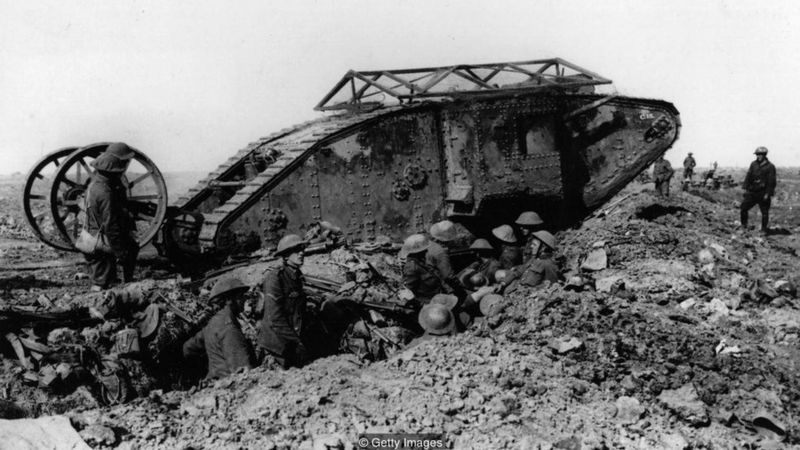
British tanks had early successes, but were slow to move and difficult to control
These tanks are dark, noisy, extremely hot, and cramped inside. The smoke emitted by the engine and the flammable fuels could turn the occupants inside like sitting in a death trap. Their slow movement makes them vulnerable to shell attacks. In addition, although equipped with large cannons and machine guns, these weapons were installed on the side, making the whole tank have to move and rotate in the right direction every time the weapons needed to be fired.
The British constantly updated the basic design of this model, in order to turn it into a "miracle weapon". The improved model, the Mark IV, entered service in 1917.
However, both the Mark I and the Mark IV were bulky and difficult to maneuver. They had a diamond-shaped design to crush the barbed wire web underneath instead of moving or turning quickly.
The idea was that the new tanks needed to work in harmony with the ground forces, moving at a speed sufficient enough to protect the troops advancing behind. Obviously, what was needed at that moment was a smaller, lighter tank to support the troops once they got through the trenches.
CustomsPig World War I British Soldier 3D Tracksuit
***
Jean Baptiste Eugene Estienne is considered one of France's most visionary artillery commanders. He was a gifted mathematician, a philosopher, and one who during his student days studied ancient Greece.
He also saw that new technology was changing the way war was happening. He was a pioneer in the study of indirect firing - a gun that fired bullets at the enemy from behind, following the instructions, navigation of an observation machine - and developed a machine that allowed to do this. In 1907, he became headmaster of the Artillery School at Grenoble.
Even before the war started, Estienne recognized the role of military aircraft - especially in how planes could be used to guide artillery fire.
During the opening weeks of World War I, Estienne used aircraft to guide artillery, inflicting enormous damage on Germany at the Battle of Charleroi as the Germans descended on Belgium and northeastern France.
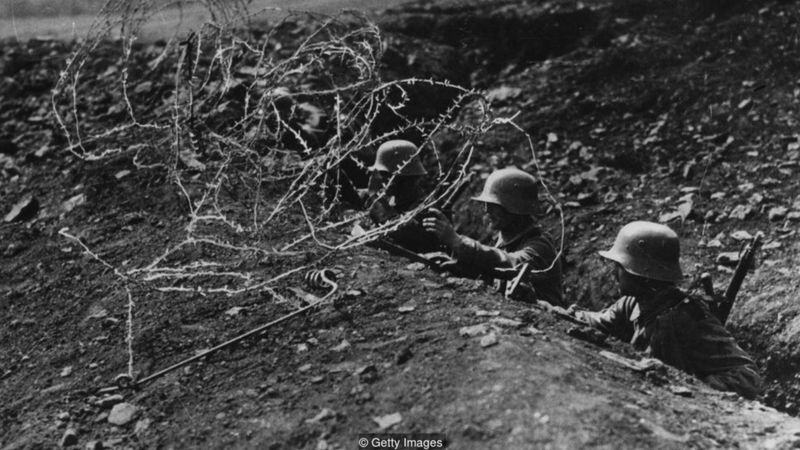
Barbed wire was a difficult obstacle for infantrymen to overcome without tanks
But his visionary ideas go beyond planes. He found that machine guns and mass shootings with rifles made it very dangerous for ground forces to rush to the front lines, and that soldiers needed to be protected somehow with movable steel shields when advancing.
CustomsPig World War I French Soldier 3D Tracksuit
As early as August 1914, Estienne believed that an armored vehicle armed with guns would play a decisive role in the coming conflict. "Gentlemen, the victory in this war will belong to which of the two belligerents which will be the first to place a gun of 75 [mm] on a vehicle able to be driven on all terrain", he told a group of French artillery officers in 1914.
Estienne was asked by the commander of the French army, General Joffre, to research a new weapon design. Then he approached one of France's most famous car designers, Louis Renault. Renault factories were busy making other vehicles at the time, and the company refused to participate. The design based on the American-made Holt tractor was too ambitious a project for an engineer who had never built a tracked vehicle.
So Estienne turned to Schneider CA1, which made France's first working tank. Like British tanks, the large, bulky and slow-moving Schneider CA1 was designed to push through land littered with uninhabited craters and into enemy trenches. But unlike the British tank, the CA1 and its cousin, the Saint Chamond, were less efficient in operation. “These French designs are horrible,” said Willey. "They're basically just mounting a 75mm gun to the front of a large tractor, far behind British tanks."
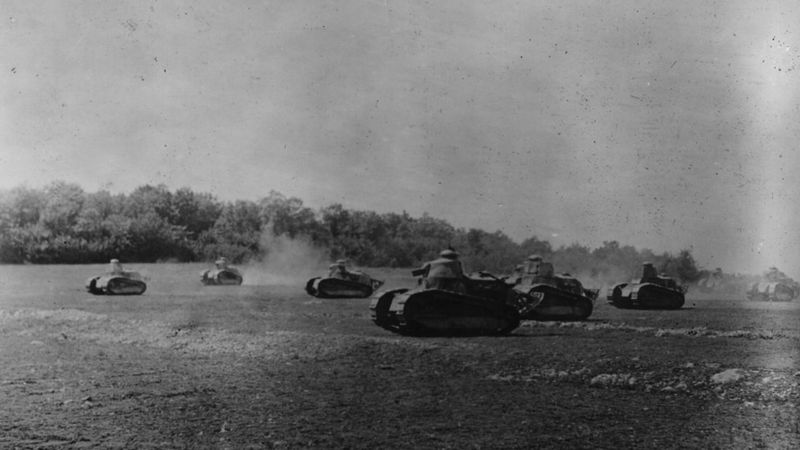
Allies troops wanted to apply the fighting method all FT tanks advancing at the same time, attacking the enemy
But Renault had another idea. He thought that once the trenches and fields were plowed through, the urgent need would be for a smaller, lighter tank - one that could radiate and attack the enemy from behind, the way cavalrymen had done for centuries.
Renault also found that the engines of the time were not powerful enough to move the heavy tank through complex terrain at an effective speed. He decided to make the product much lighter. The British Mark IV weighed 29 tons, but the new tank weighed only 7 tons, which prevented it from sinking when entering soft ground, being plowed between trenches by artillery shells.
CustomsPig WW1 Russian Soldiers Tracksuit
Renault collaborated with designer Rodolphe Ernst-Metzmaier to create a new tank. The new model had revolutionary features. It was the first vehicle to be armed - with a machine gun or a 37 mm cannon - mounted on a 360-degree rotating turret.
While the British tank carried a tank crew of 12, this new tank only needed two people, including a tank driver sitting in the front, and a commander or gunner sitting directly behind to control the turret. The engine was located aft, in a separate compartment - a design that has since been followed by most tanks.
The British also had tanks that traded heavy guns for machine guns - and this model, The Whippet, entered service in the final battles in 1918. But Whippet's engine was located in the front, the tank compartment did not have a rotating turret.
There were other innovations hidden in Renault's design. The tank cooled the engine by drawing cool air from the front of the vehicle and then venting hot air out the back. This made driving much more pleasant than driving a Mark I or IV.
The designers also ensured that the engine was still working when lying in an inclined position, when traveling on high slopes, and this allowed the tank to climb up and down the deep holes plowed by artillery shells without getting stuck.
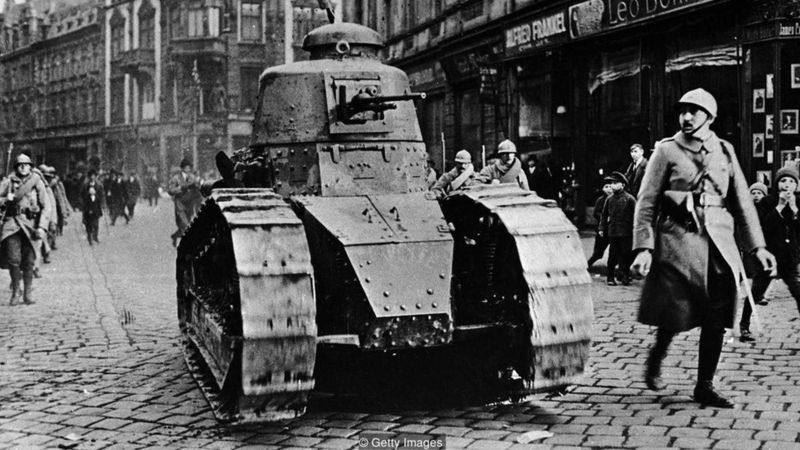
The FT tank was widely used during World War I, inspiring other countries to design similar tanks, such as in Italy and the Soviet Union.
As a result, the FT's two-member tank crew moved with ease and comfort at the speed up to 11km/h, a speed not to be underestimated in 1918. The design was to serve the fighting style of swarms of small tanks with infantrymen behind them would overwhelm enemy defenses, break through trenches and then spread out in different directions.
CustomsPig World War I German Soldier 3D Tracksuit
The French command saw the very promising potential of this tank, and planned to produce more than 12,000 tanks by the end of 1919. Renault could only deal with a small part, so other car manufacturers also planned to join the production line. Gradually, in 1918 more and more FT tanks were produced, making them possible to be used in large numbers.
The final months of 1918 were a period of intense redesign, when the German defenses became ineffective and Germany had to withdraw quickly through France and Belgium.
"It's part of that final nail in the coffin for the Germans," said Willey. "They were blocked off by the British and ran out of fuel and food. When you look back at the memories of the Germans in the 1920s with the question 'Why do we lose?', tanks are always mentioned."
Willey said the tank was a symbol that the Western Allies - boosted by American industrial power since 1917 - would win.
By the end of the war, the Germans had only produced about 20 tanks. While the Germans were struggling with that, the French had already produced more than 1,0000 FT tanks.
In 1929, the British Army exercised at Salisbury Plain using small tanks, inspired by machines like the Whippet and FT - and attracted the interest of German commanders. They would combine these tactics with a new aircraft and artillery style called 'Blitzkreig', just a decade later.
5 Tanks That Changed The Course Of World War I
5 Tanks That Changed The Course Of World War I
It has been widely acknowledged that tanks were essential during World War I, as they were used to cross trenches on the Western Front. But do you know what led to the invention of the tank?
Since the end of 1914, German and British-French forces had faced each other in the trenches in a stalemate. The fighting on the Western Front often featured surprise attacks, as one side managed to break through the other's lines with intense artillery fire, followed by tens of thousands of soldiers attacking in the no man's land.
But advanced technology made such attacks unacceptably draining. Barbed wire was something that’s difficult to overcome and took a long time to remove from clothes. Machine guns could continuously knock down enemies from hundreds of meters away. Concrete bunkers and well-constructed trenches kept soldiers safe even from being hit by hundreds of guns.
Both Britain and France were worried that they would lose all their troops after failed attacks on the front lines because they could not break through the German defence. A group of visionary inventors and engineers then came up with the same idea: there must be a vehicle of some kind, a vehicle that must be armed and armored, capable of creating gaps between barbed wire, knocking down pegs, machine gun bunkers, and protecting infantry long enough to attack and capture enemy trenches. "That's what it takes to repel the enemy's occupation," said David Willey, curator at the Bovington Tank Museum. Then the first tanks stormed the battlefield in September 1916.
Costumes Of The Belligerents In World War I
Below is the list of 5 tanks that helped change the landscape of World War I. The images and their descriptions of tanks during WWI are taken from Michael E. Haskew's book “Tank: 100 Years Of The World's Most Important Armored Military Vehicle”.
- British Mark I tank
The first tank was invented by the British, used to cross enemy trenches, while the tank's armor allowed it to advance towards German machine gun turrets without being hit. The wide metal grooves under the tank's track can crush barbed wire and pass very easily. At that time – 1916, the Germans did not own any tanks.

The world's first tank was built by the British, used to fight Nazi Germany
- Mark IV tank named Fascine
After the British Empire first used tanks on the battlefield at the Battle of Flers-Courcelette in September 1916, the Germans learned from experience by either making trenches deeper and wider to prevent British tanks from crossing or making a narrow trench for the tanks which passed through would be destroyed by bombs.

A British Mark IV tank moved with infantry across the French battlefield during World War I

Transporting Mark IV tanks by train
Do you see a bunch of wood on each tank? Its function was to pave the way for the tanks to easily cross through large, deep trenches.
CustomsPig World War I British Soldier 3D Tracksuit
- British escort tank
When the tanks ran out of fuel, they had to return to the starting point to refuel, but when the tanks were withdrawn, the soldiers were vulnerable to attack.
Tank providing fuel and weapons, soldiers
To overcome this situation, the British army built tanks providing fuel and soldiers
- French Renault FT tank
Following the British, France built and put tanks on the battlefield. In the midst of World War I, the French military industry was not strong enough to produce powerful engines capable of driving large tanks. So they have their own way of bringing mini tanks into the battlefield.

Mini A Renault FT-17 light tank manufactured by France was introduced into World War I
This is also the first tank with a 360-degree rotating gun block.
The price of 5 Renault FT tanks is equivalent to a Saint Chamond heavy tank and Colonel Estienne believed in the battlefield tactics of many a light tank: a fast, multi-target strategy that will make the enemy harder to deal with than a large, slow-moving tank.
CustomsPig World War I French Soldier 3D Tracksuit
- German Beutepanzer (tank captured from England and retrofitted)
The Germans built only 20 Sturmpanzerwagen heavy tanks of their own, which were based on the A7V track chassis.

The Beutepanzer tank captured by the Germans from the British team
After the Battle of Cambrai in November and December 1917, the Germans actively searched for Mark IV (British) tanks damaged during the war. They recovered about 300 damaged tanks and repaired 170 back to combat condition. They also replaced and retrofitted their tank machine guns and 6-barrel guns and returned them to the battlefield in 1918 to fight against the country that produced them. Due to the similarity, the British army suffered many losses due to mistaking them on the same side. The British decided to paint more large red-white stripes on the side and above to distinguish them from the vehicles that the Germans had taken.
CustomsPig World War I German Soldier 3D Tracksuit
Classics In Trench Design During World War I
During World War I, the military doctrines of each European country were different, but they all had one thing in common: they were easily stopped by trench warfare.
At that time, France and Germany were the two great powers with the most specific and detailed military doctrines. In particular, the French favored surprise attack and speed on the battlefield.
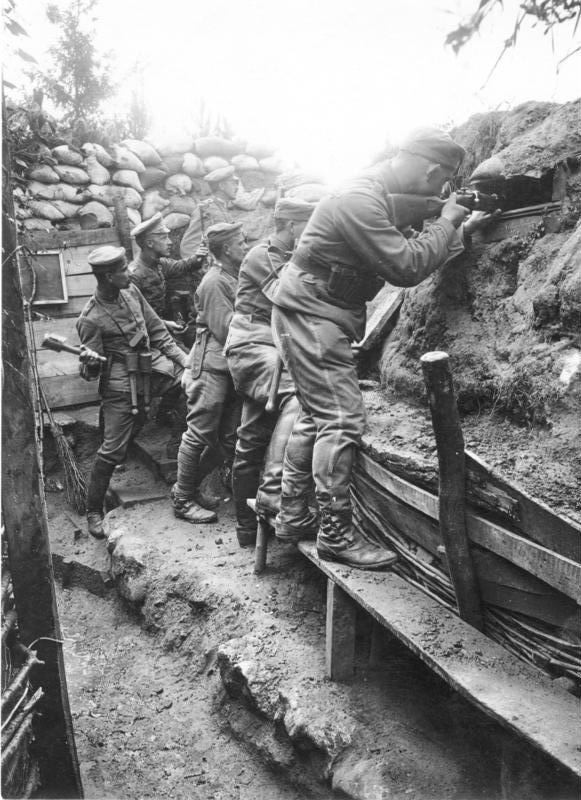
CustomsPig World War I Uniform French Soldiers Hoodies Pullover Sweatshirt Cosplay Jacket Tracksuit
Meanwhile, Germany was more inclined towards the doctrine of using the power of fire, specifically mortars, cannons and machine guns to overwhelm the enemy.
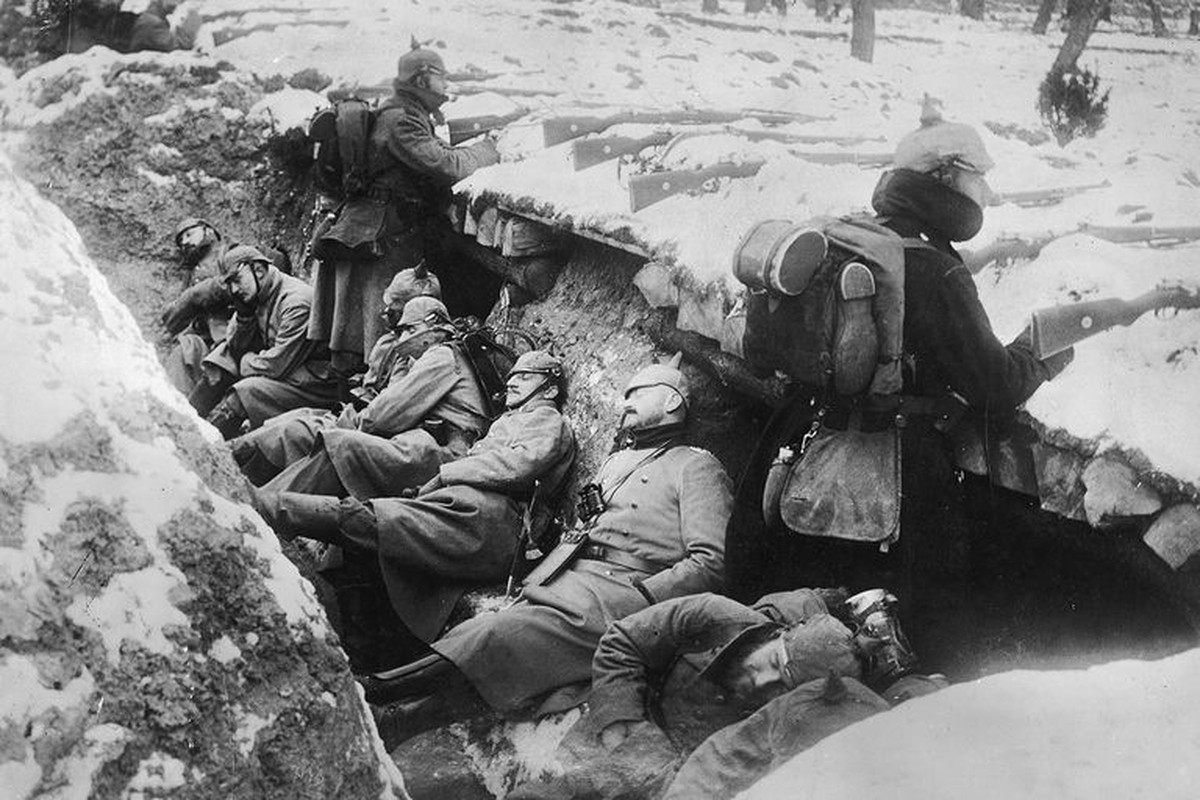
CustomsPig World War I German Soldier 3D Tracksuit
Both of these tactics were easily countered by a solid defense system, which could help soldiers fend off sudden high-speed French counter-attacks and also defend against Germans' great firepower. It was called "trench warfare”.
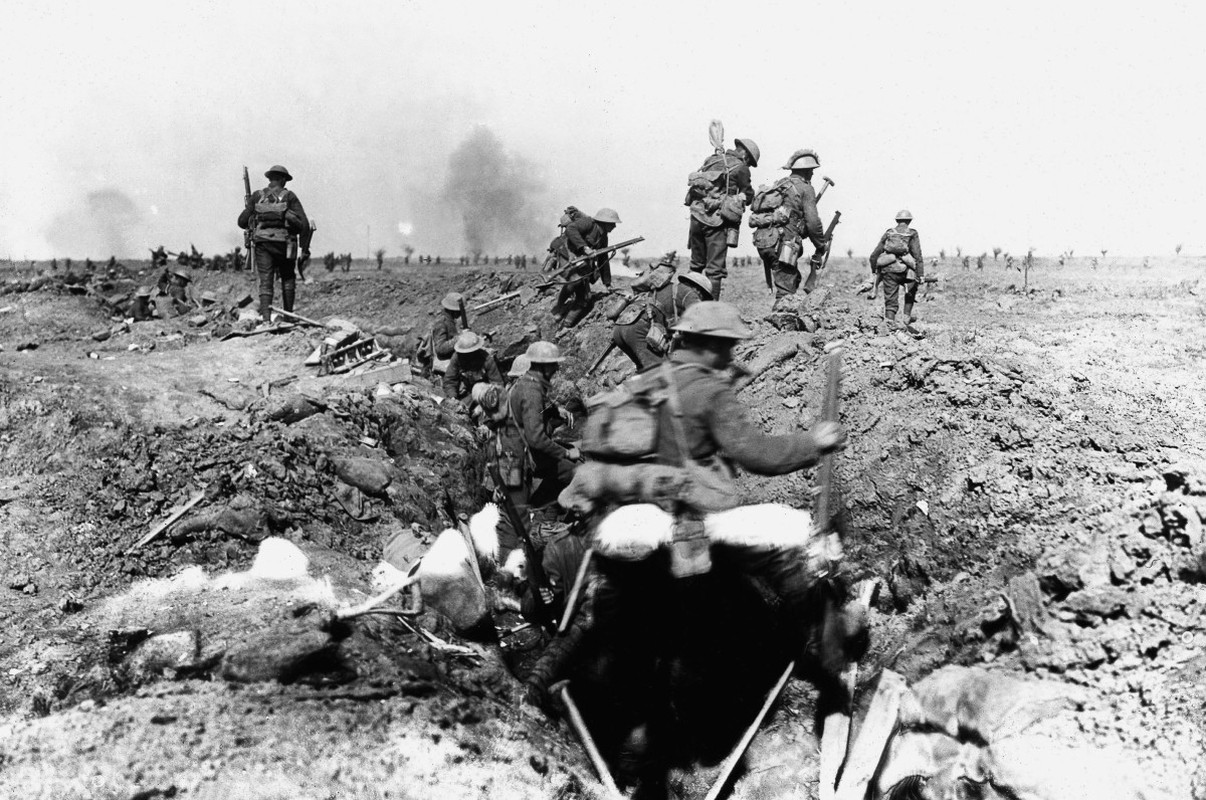
The British, in the opposite direction, always appreciated practicality and did not have a specific war doctrine. They only based on the actual situation on the battlefield to handle. However, when seeing the Germans and the French took great pains to dig detailed and elaborate trenches, the British also immediately... mimicked.
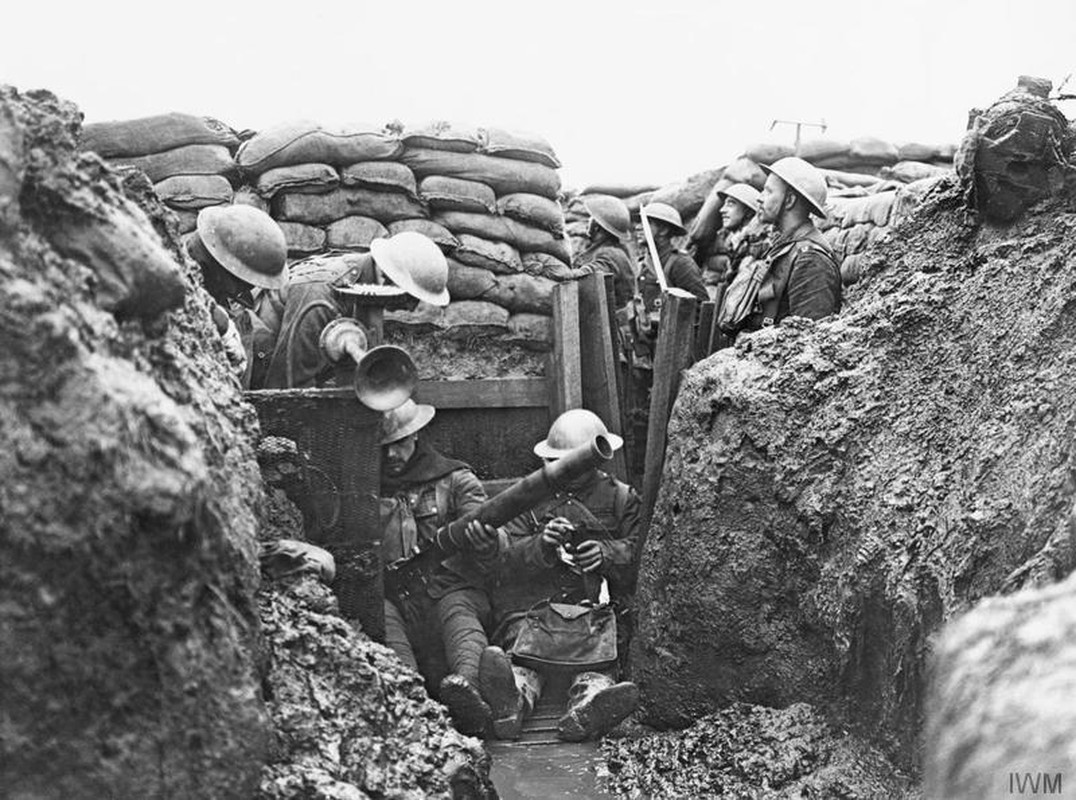
CustomsPig World War I British Soldier 3D Tracksuit
Initially, the trenches of the two opposing sides were only between 65 and 90 meters apart - this was an ideal distance for snipers on both sides to test marksmanship skills.
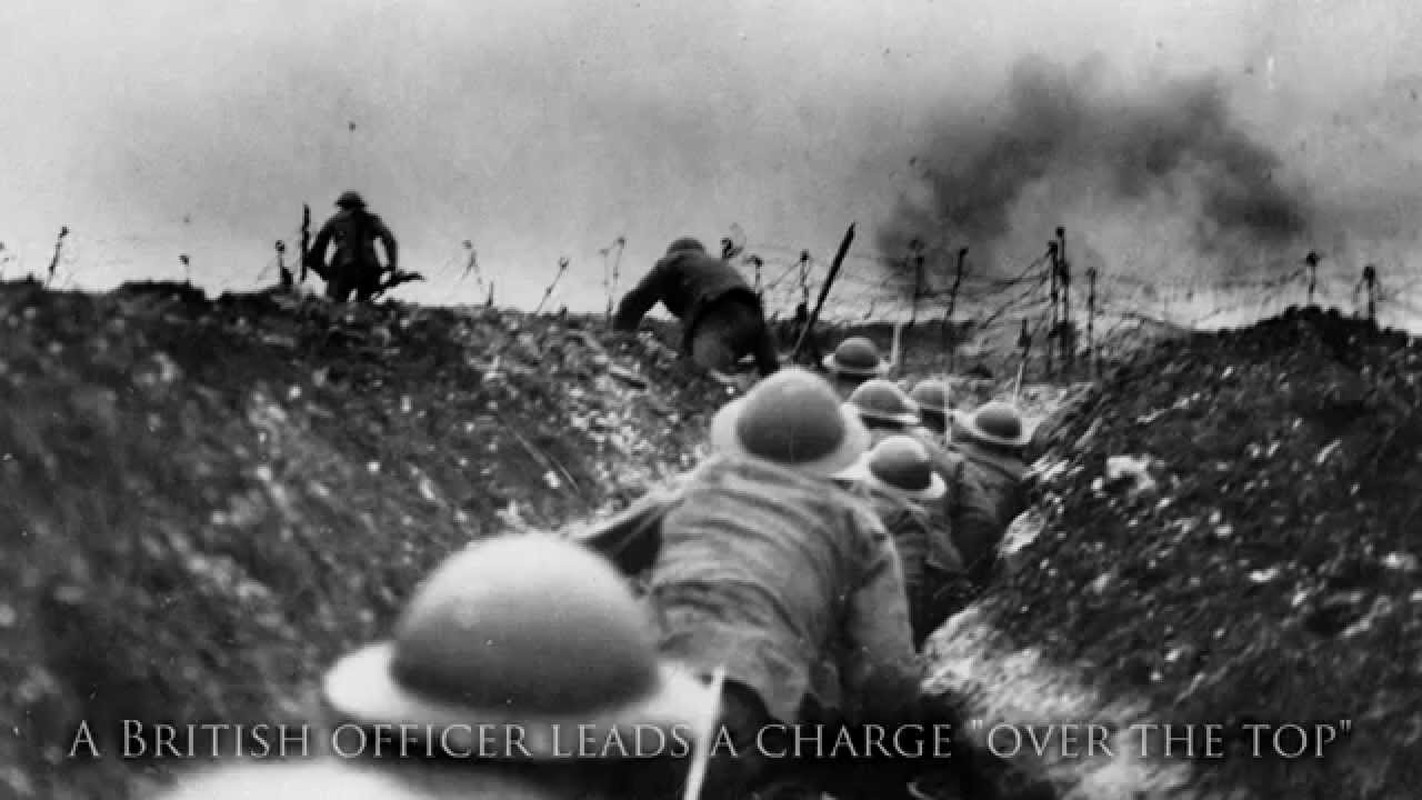
Later, due to the advancement of science and technology and stronger firepower of both parties, the width of the front line began to expand, exceeding 90 meters and in some places up to 300 meters.
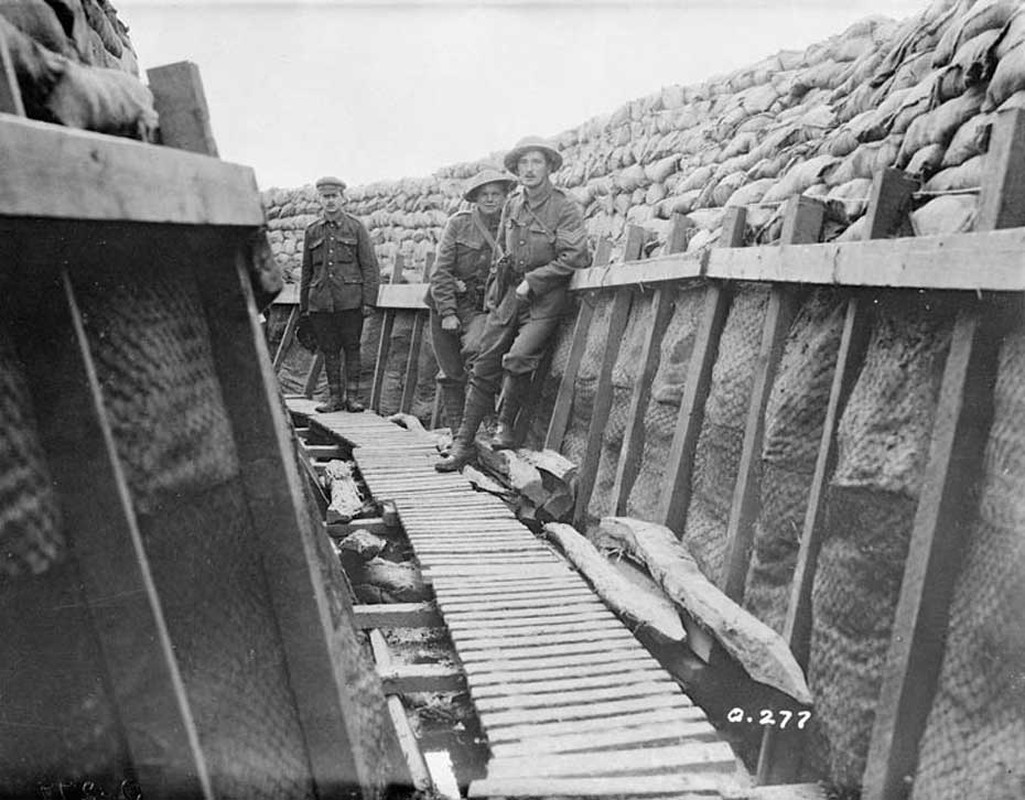
By the end of the war, the front line on the front between the two factions had expanded for a kilometer - enough room for the warring parties to unleash all kinds of destructive fire on the "No Man's Land".
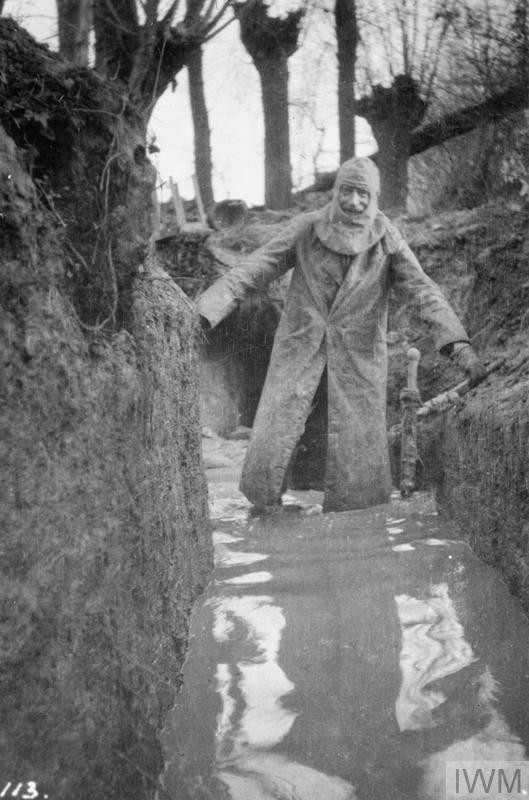
Costumes Of The Belligerents In World War I
Basically, a trench of warring factions will cover all basic living needs, from a place to eat and sleep to a toilet, bathroom, hospital or even a church.
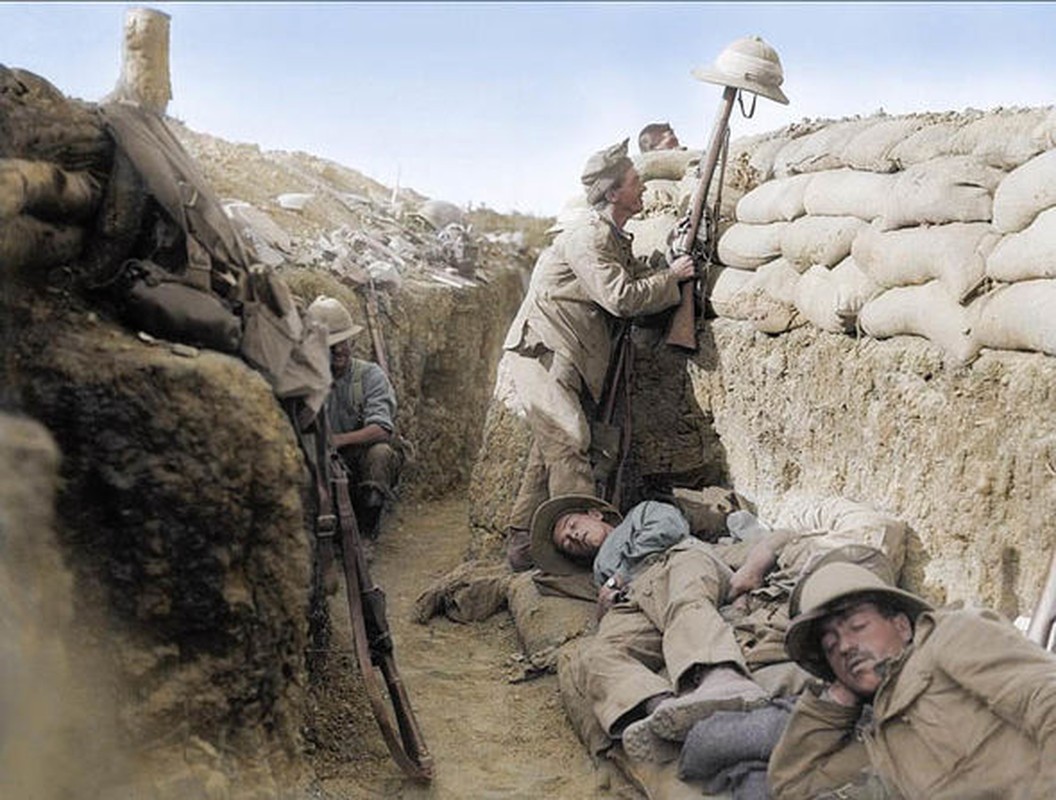
According to British records, each soldier when deployed to battle will only have 15% of the time to participate in direct combat, the remaining time is divided with 10% on support missions, 30% on reserve duty, 20% of the time spent on resting at the rear and 25% was given to the reserve period in case the soldier needed to be hospitalized, on leave or sent to training.
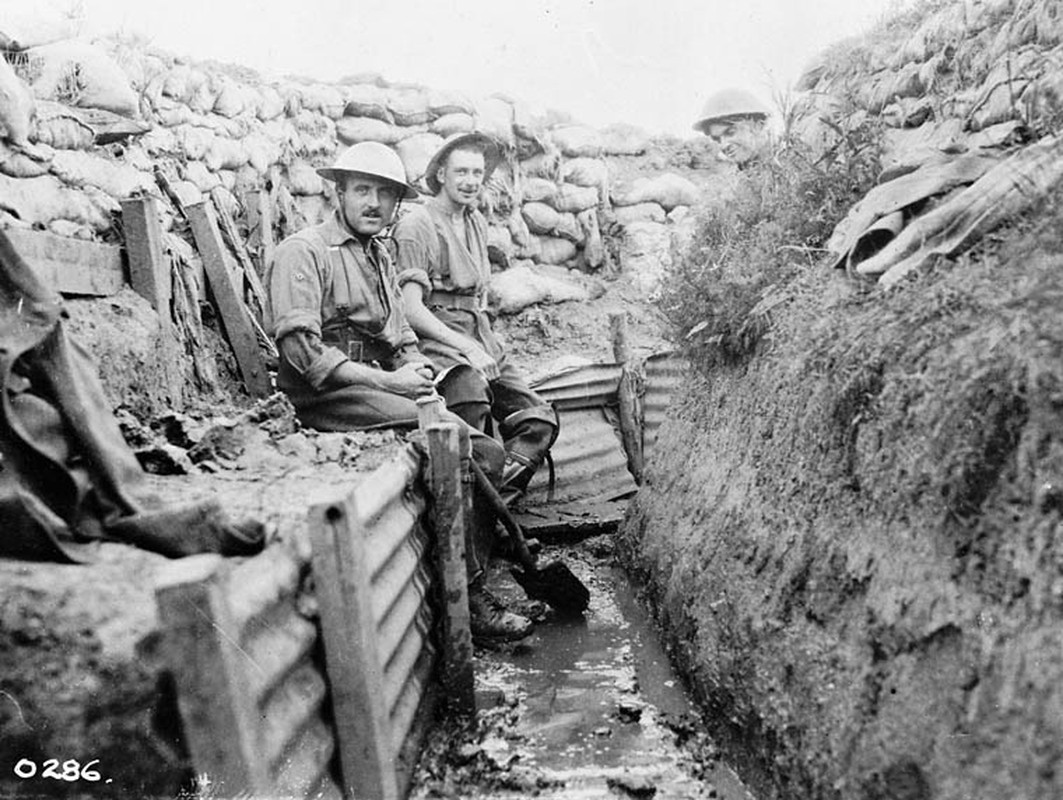
What You Don’t Know About World War I (Part 1)
The sides defended in the trenches with a system of machine gun emplacements, barbed wire, minefields and dense artillery positions. The trench warfare at that time made it difficult to attack and easy to defend, so the war progressed slowly, with little dynamism and few decisive victories. The outcome of the war depends on the resistance of the opposing parties to the burden of war attrition.
Later, historians concluded that it was because of this trench warfare that made World War I so persistent, there seemed to be no end, and the outcome of the war was decided on the negotiating table, not the battlefield.
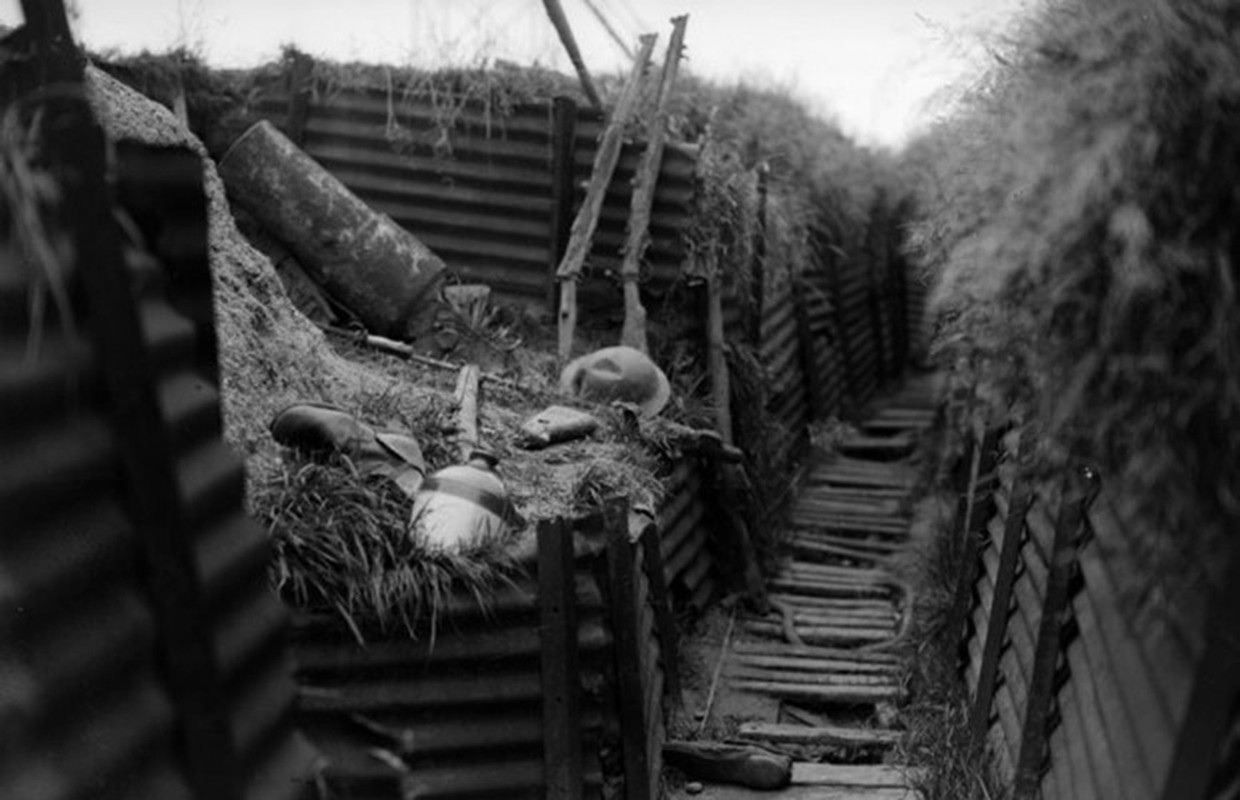
What you don’t know about World War I (Part 2)
What you don’t know about World War I (Part 2)
- Machine guns, trenches and soldiers
World War I saw machine guns widely used for the first time. To protect themselves, the soldiers quickly learned to hide and return fire from individual fortifications.
These fortifications quickly connected and became mile-long trenches. As the war progressed, three more layers of trenches were built after the first. By that way, the enemy still had to deal with three more trenches once it had captured the front trench.
The longest trench was on the western front, where it stretched from Belgium through France and down to Switzerland. Since it was impossible to bypass the trenches, the attackers' only option was to move forward. This was a suicide mission as both sides defended their first layer of trenches with barbed wire and machine guns.

Another problem was that infantry when attacking was often supported by heavy artillery, but heavy artillery itself quickly became a problem and even contributed to the failure of attacks. Shell explosions signaled to the enemy that an attack was imminent, prompting them to quickly consolidate their positions and prepare to fight back.
The shelling also slowed the infantry's advance because the shells exploded in front of them. There was little that soldiers could do under fire from enemy machine guns and their own shells to cross a strip of land protected by barbed wire.
Costumes Of The Belligerents In World War I
- World War I led to the development of tanks
The trenches quickly led to a stalemate on both sides in World War I. No one won and no one lost even though the damage was divided equally between both sides.
Both sides just hid in their trenches and frontal attacks, started by whichever party, almost ended up with casualties on both sides and there was no winner. However, the war advanced to a new level with the arrival of tanks.

Before the war, offers to build tanks in Britain, France and Germany were all rejected. However, during World War I, Britain and France both secretly researched to build a tank in the hope that it would break the stalemate. Britain was the first country to build a tank and put it into battle on the Somme front on September 15, 1916.
The Germans had to flee when British tanks overran two of the three German trenches. But the tank had to withdraw because of problems with control. They were not really perfect.Heat and toxic fumes were big problems for tankmen, and they often failed. Of the 50 deployed, half were damaged before the attack. The Germans quickly became accustomed to tank attacks and developed anti-tank weapons and tactics. However, it was not enough to stop thousands of tanks deployed by the Allies.
On the other hand, the German army could only deploy 20 tanks. The Allied tanks broke through the trenches, forcing the Germans to surrender. If at the beginning of the war, machine guns forced the soldiers to huddle in the trenches, by the end of the war, the tanks pushed them back out.
They are now known as tanks, but the British army initially told workers that they were manufacturing "mechanized water tanks" to transport water for British troops in the deserts (now belonging to Iraq). The worker then shortens it to "water tank" and then to "tank". Ernest Swinton, a British officer involved in the development of the tank, liked the name and decided to use it in official documents.
CustomsPig Tracksuit Hoodies Pullover Sweatshirt World War I British Soldiers Historical 3D Apparel
- Before 1939, World War I was known by many names except “World War I”
The time before 1939, World War I was not called World War I. Simply because no one knew that another world war would take place.
In America, it was called The European War while everyone else called it the Great War.

The term World War was first mentioned by the US when American newspapers used it to report the US entry into the war in 1917.
It was called the Great War because it attracted a large number of countries to the war. Besides the term Great War, it is also known as "The Great War for Civilization".
- World War I pushed the warring countries into a swamp of debt and turned the US into a "superpower"
War is a money furnace! The warring countries during and after the war struggled to pay for this valuable lesson.
The war destroyed the industries and economies of Germany, Russia, Great Britain and France. Except for Germany, the remaining three countries were dependent on supplies from the US. The Allies bought a lot of things from the US, and the US economy moved from producing civilian goods to military goods. By the time the war ended, the Allies were heavily indebted to the United States and even indebted to each other in a vicious circle.

Specifically, Russia was indebted to France, and France was indebted to the US and UK. France owed Britain more than it did the United States, but Britain itself owed heavily to the United States. France wanted to repay the US and UK debt with the money owed by Russia. However, Lenin refused to pay because the government of Tsarist Russia was a debtor and the Tsar was overthrown.
On the other hand, Britain intended to use the money owed by France and Italy to repay the US debt. But France could not pay because Russia refused to pay. France attempted to repay its debts with reparations paid by Germany. But Germany had no money and could only make money if it exported goods to the US. The US, due to a recession in the 1920s, could not buy imports from Germany. Things got so bad that the US lent money to Germany in 1924 so that Germany could repay France and Britain. In return, France and Britain used this money to repay the US debt.
At the same time, most of the warring countries abandoned the “gold standard” at the beginning of the war, leading to the devaluation of their currencies by the end of the war. This made the US the country with the most gold, and thus the country as the custodian of the global gold standard. When the United States “devalued” its currency, it caused other countries to adjust as they needed to devalue their currencies below the value of the American currency based on the new gold standard America determined.
This option would lead to massive unemployment, while the other option would be to devalue their currency against the US dollar. Most countries chose the second option, although Britain chose the first. One way or another, the America and the US dollar were clearly the winners.
US Army Uniform WW1 Infantryman
- World War I brought Hitler to power and started World War II
The Treaty of Versailles officially ended World War I. It forced Germany to pay war damage at 269 billion gold (German currency at the time), equivalent to 100,000 tons of gold to the Allies. It also held Germany accountable for the war. The aforementioned compensation was later reduced to 112 billion gold, but that did not lessen the anti-Allied sentiment in Germany.
This debt placed a heavy burden on Germany. In fact, Germany only completed this payment in 2010. Germany suffered a severe economic crisis at the end of the war.
Unemployment abounded and inflation skyrocketed. However, the country still had to pay reparations and accepted responsibility for causing the war. German people did not want that. These were the main factors that brought Adolf Hitler and the Nazi Party to power. The Nazis propagated the dangers of the Allies and promised to bring the Germans out of their predicament.

When Hitler came to power, he refused to pay more. Instead, Hitler built an army and waged World War II.
This second war destroyed the purpose of war reparations. The Allies demanded a huge amount of money from Germany so that it would not have enough money to start another war. But clearly this aim backfired. Allies had learned profound lessons. Although they still demanded reparations from Germany at the end of World War II, the amount was not as much as demanded after World War I. Instead, the Allies focused on rebuilding the country and punishing Germany's wartime leaders.
What you don’t know about World War I (Part 1)
What you don’t know about World War I (Part 1)
World War I was one of the most devastating wars known to mankind before the Second World War.
Although the political conflicts of those days laid the groundwork for the war, the war only really broke out after the assassination of the Austro-Hungarian Archduke Franz Ferdinand and his wife, Sophie, by a Serbian nationalist.
Over a century since the end of World War I, there have been countless studies, documents, photographs, and exhibits about it. However, there are also hidden corners related to World War I that few of us know.
- The three major empires of World War I were ruled by relatives
Germany, Russia, and Great Britain - three empires that played a key role in World War I - were ruled by relatives.
In terms of bloodline, these three emperors were all descendants of King George II of England. Emperor Wilhelm II's mother was the sister of King George V's father, while King George V's mother and Nicholas II's mother were sisters.
At that time, Queen Victoria was called the "Mother of Europe" because she was closely related to the emperors of most of the European empires.

For example, George V and Wilhelm II were both her grandsons. However, she discouraged the tightening of their relationship and did not want them to go together. She even prevented two people from visiting her at the same time.
CustomsPig Tracksuit Hoodies Pullover Sweatshirt George II of Great Britain Historical 3D Apparel
CustomsPig Tracksuit Hoodies Pullover Sweatshirt King George V Historical 3D Apparel
CustomsPig Tracksuit Hoodies Pullover Sweatshirt Nicholas II of Russia Historical 3D Apparel
CustomsPig Tracksuit Hoodies Pullover Sweatshirt Queen Victoria Historical 3D Apparel
King George V's mother, Princess Alexandra of Denmark, also discouraged any contact between George V and Wilhelm II. Instead, she wanted George V to build a close relationship with Tsar Nicholas II, the son of her sister, Dagmar. This powerful trio maintained competency and alliance at the time they became emperors.
Although they all did not believe that the assassination of Archduke Franz Ferdinand would lead to war between Serbia and the Austro-Hungarian Empire, they knew it could. And such a war would certainly involve them because Austria-Hungary signed an alliance treaty with Germany and Serbia allied with Russia. At the same time, Russia again signed an alliance with France and France allied with Britain.
CustomsPig Tracksuit Hoodies Pullover Sweatshirt Nicholas II of Russia Historical 3D Apparel
Costumes Of The Belligerents In World War I
They did not have the strength and sanity needed to stop the war when it was about to happen. The assassination and the ensuing political crisis gave the military generals more power, while the politicians were more concerned with "national pride", while the arms dealers just wanted to make money.
- Russia once asked Germany not to declare war
World War I officially began on July 28, 1914, the day the Austro-Hungarian Empire declared war on Serbia.
That morning, Tsar Nicholas II sent a telegram to Emperor Wilhelm II, asking him not to declare war. The telegram was to some extent considered semi-official, and Tsar Nicholas II even signed it under his nickname Nicky. Nicholas II explained that a war against Serbia would lead to Russian involvement, which he did not want.

Wilhelm II replied that the impending war was not a political scheme, but merely to deal with those who had murdered Archduke Ferdinand. He added that he was doing his best to ensure Austria-Hungary reached an agreement with Russia. He also signed the telegram with his nickname Willy.
They continued to communicate by telegram. However, they did not reach an agreement even though both did not want war. At one point, Wilhelm II assumed that Austro-Hungarian troops had entered Belgrade, Serbia, waiting for Serbia to destroy the Black Hand terrorist group, who were believed to be responsible for the assassination of Ferdinand.
Wilhelm II instructed his chancellor to communicate this observation to Russia, but the chancellor instructed the German Ambassador to Russia to inform Russia that Germany would mobilize its troops in response to the mobilization of Russia.
Both emperors continued to exchange telegrams, but had yet to come to a conclusion. They also did not stop mobilizing their troops, nor did they do anything to delay the war. On August 1, a few days after the first telegram was sent, Germany declared war on Russia.
- World War I created the first communist country
Most likely, Russia would not have become the first Communist country had Vladimir Ilyich Lenin not taken power. His takeover would not have been successful had the two Russian Revolutions of 1917 not occurred. And those revolutions probably wouldn't have happened if Russia hadn't entered World War I.

The war took a heavy toll on the Russian economy. It took longer than expected and there was no hope that Russia would win. After a series of setbacks, Tsar Nicholas II dismissed the uncle he had appointed as chief of the general staff and took control of the army. This ruined the Tsar's reputation. In the past, generals would be responsible for military defeats, but now it is the Tsar who would assume full responsibility.
Nicholas II made another mistake by handing regent power to Alexandra Feodorovna, his wife, instead of the prime minister. First, Alexandra is German, and Russia is fighting Germany. In addition, Alexandra deified Grigori Rasputin, a faith healer she hoped would cure her son's hemophilia. However, Rasputin had other intentions and soon intervened in national affairs. In December 1916, Rasputin was killed by some Russian who did not believe in him. But what Rasputin did smeared the Tsar's family and Rasputin's death couldn’t change anything.
Besides, the protracted war had a heavy impact on the Russian economy. From August 1914 to March 1917, Russia poured into the war 29.6 billion rupees, three times more than the "national treasury" at that time. To have money to pay for the war, the court continuously issued new taxes and organized the sale of public bonds among the people. The total number of bonds from the beginning of 1914 was 8.8 billion rupees, which increased to 36.6 billion rupees in 1917.
In February 1917, inflation and food shortages caused widespread protests that quickly turned into a revolution. Nicholas II left the front lines and returned to the palace to handle the crisis, but he was forced to abdicate before returning to his palace. A provisional government took over but did too little to resolve the contradictions that caused the revolution.
The second Lenin-led revolution since November 1917 overthrew the provisional government and brought Lenin to power. The political slogan of the Communist Party of Russia at that time was a promise to bring to the Russian people "peace, bread and land".
Lenin entered into negotiations with Germany, which led to the signing of the Brest-Litovsk treaty in March 1918, ending Russia's involvement in World War I. Russia ceded Ukraine, Finland, Poland and the Baltic territories to Germany. In return, the Germans withdrew from Russia.
CustomsPig Tracksuit Hoodies Pullover Sweatshirt Vladimir Lenin Historical 3D Apparel
- World War I destroyed three empires and formed many new nations
World War I changed the borders of Europe and Asia. It led to the fall of three empires – Germany, Ottoman and Russia – and the emergence of several new countries on the world map.
Poland became independent from the Russian Empire and the Austro-Hungarian Empire was divided into four countries: Austria, Hungary, Czechoslovakia and Yugoslavia.

Austria ceded part of its land to Italy and Czechoslovakia and became an inland country. Bulgaria gives up its part of the coast in the Mediterranean that extends to Greece. Hungary lost most of its land to Czechoslovakia, although it also lost part to Romania.
The Ottoman Empire was the most pathetic. Its divided land lies between England and France. Today's Albania, Algeria, Bosnia and Herzegovina, Bulgaria, Croatia, Egypt, Greece, Hungary, Iraq, Israel, Jordan, Kuwait, Lebanon, Libya, Macedonia, Montenegro, Romania, Russia, Saudi Arabia, Serbia, Slovenia Syria, Tunisia, Turkey, and the United Arab Emirates were once part or all of the Ottoman Empire.
- German was banned in the US since the US declared war on Germany
The United States became a warring country when it declared war on Germany on April 7, 1917. Before the declaration of war, German was the second most spoken language in America after English.
However, rising anti-German sentiment after the US declaration of war quickly led to a ban on the use of German. German was dropped from the curricula of many American schools, and German books were banned. Music stores also refuse to sell German-language records.
Anti-German sentiment extended to the culinary field when "German fried potatoes" was renamed "American fried potatoes" and "German sauerkraut" was renamed “liberty cabbage".

Dogs are no exception. German shepherds were renamed Alsatian because the Alsace region of France was where they were first bred. Meanwhile, the dachshund was renamed "badger" or "liberty pup". The dog itself has become a symbol of Germany and is used to represent Germany in political cartoons.
There are also reports that some dachshunds have been stoned to death in the UK, although that cannot be verified.
(to be continued...)







